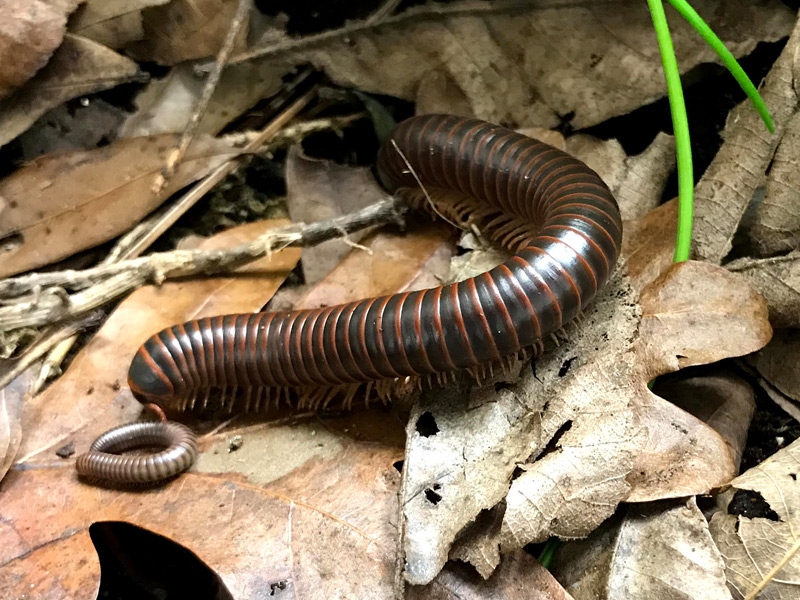The Millipedes Who Traveled Many Miles
For immediate release ‐ March 19, 2021
Contact: Micah Beasley, 919.707.9970. Images available upon request
Museum staff and guests alike often wonder where the animals that live on display at our location in downtown Raleigh come from. Frequently, that answer is other museums, zoos or aquariums from across the country.
Exchanging creatures with other institutions helps find homes for animals who need them. It also allows the Museum to acquire new species it may not otherwise have access to, while also promoting genetic diversity. Transactions like these are mutually beneficial for facilities and involve an array of diverse species — even millipedes have traveled near and far to join us!
 American Giant Millipede with young.
American Giant Millipede with young.
In late 2020, the Arthropod Zoo received a group of American Giant Millipedes (Narceus americanus) from the Audubon Butterfly Garden and Insectarium in New Orleans.
In North Carolina, you are most likely to see these large, round creatures after a warm rain. As adults, they are some of the largest invertebrates the central part of our state has to offer.
 The Detritivore Exhibit on the second floor of the NRC building.
The Detritivore Exhibit on the second floor of the NRC building.
The Arthropod Zoo is currently in the process of sending a group of our Tanzanian millipedes (Dendrostreptus macracanthus) to the Butterfly Pavilion, a natural science center in Colorado.
Museum visitors can see the American Giant Millipedes in the Arthropod Zoo on the fourth floor of the Nature Exploration Center (NEC). The Tanzanian millipedes can be found on the second floor of the Nature Research Center (NRC) in the Detritivore Exhibit.
Both groups are currently have offspring, but you’ll have to look carefully since they tend to hide underground until they reach adulthood!

